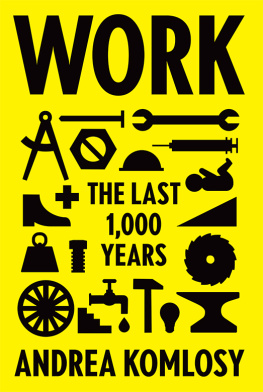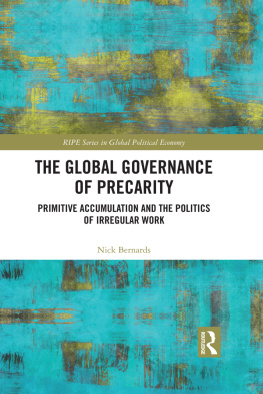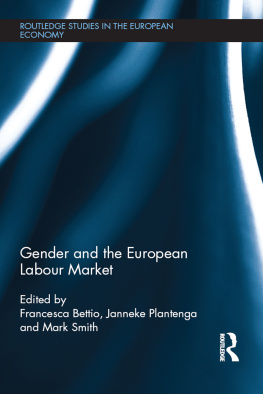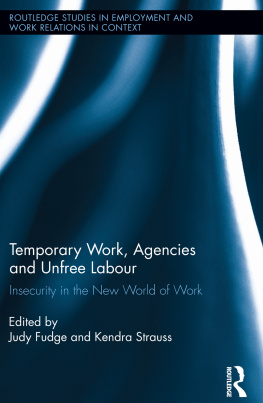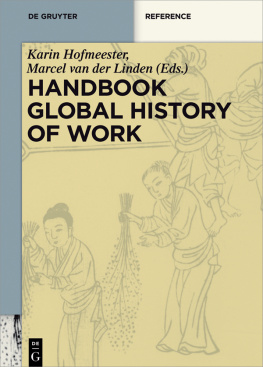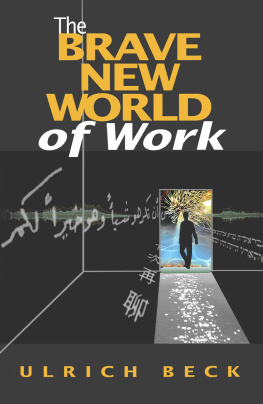WORK
The Last 1,000 Years
Andrea Komlosy
Translated by
Jacob K. Watson
with
Loren Balhorn

First published in English by Verso 2018
First published in German as Arbeit. Eine globalhistorische Perspektive
Promedia Verlag/Vienna, Austria 2014
Translation Jacob K. Watson and Loren Balhorn 2018
All rights reserved
The moral rights of the author have been asserted
1 3 5 7 9 10 8 6 4 2
Verso
UK: 6 Meard Street, London W1F 0EG
US: 20 Jay Street, Suite 1010, Brooklyn, NY 11201
versobooks.com
Verso is the imprint of New Left Books
ISBN-13: 978-1-78663-410-8
ISBN-13: 978-1-78663-412-2 (US EBK)
ISBN-13: 978-1-78663-411-5 (UK EBK)
British Library Cataloguing in Publication Data
A catalogue record for this book is available from the British Library
Library of Congress Cataloging-in-Publication Data
Names: Komlosy, Andrea, author.
Title: Work : the last 1,000 years / Andrea Komlosy ; translated by Jacob K.
Watson with Loren Balhorn.
Other titles: Arbeit. English
Description: London ; Brooklyn, NY : Verso, 2018. |
Includes bibliographical
references and index.
Identifiers: LCCN 2017051518 | ISBN
9781786634108 (hardback)
Subjects: LCSH: Employment (Economic theory)
History. | Labor History. |
Work History.
Classification: LCC HD5701.5 .K6613 2018 | DDC
331.09 dc23
LC record available at
https://lccn.loc.gov/2017051518
Typeset in Minion Pro by MJ & N Gavan, Truro, Cornwall
Printed in the UK by CPI Mackays
Contents
This volume is a comparative, intercultural, global history of working conditions and labour relations in human society in short, a history of work, with a particular focus on the ways different relations and conditions have been interconnected throughout history.
The historical reconstruction and depiction of these interconnections assumes the existence of simultaneously existing combinations of different labour relations. Such an approach rejects the notion of a linear, progressive sequence of modes of production, along with the conception of work that such thinking would entail. Rather, we will concentrate on the wide variety of activities that have served peoples survival and self-discovery over time. The term work encompasses both market-oriented and subsistence activities; it includes human activity for the sake of naked survival and also the satisfaction of desires for luxury or status, as well as activities for the sake of cultural representation or demonstrations of power and faith. The separation of workplace and home of working hours and free time remained the exception for most of human history, only becoming widespread during the Industrial Revolution through the centralization of gainful employment in the factories and offices of the industrialized West at the end of the eighteenth century. Yet this new lifeworld failed to become a daily reality for all people in industrial society, where work life was shaped by peasant agriculture, handicrafts, house and subsistence work, and by a wide range of activities allowing people without regular employment to get by. It was even less true of regions in and outside Europe where large factories initially played no role or, in the course of catch-up industrialization, a non-dominant role in which factory work remained only one gainful form of work among countless subsistence activities carried out in the context of the household and family unit.
The simultaneity and combination of different lab our relations are depicted in this volume across six historical epochs, defined by representative years (1250, 1500, 1700, 1800, 1900 and today).
The year 1250 stands for the growth of urbanization and exchange of daily staples in connection with the formation of a Eurasian world system, the dynamics of which were dominated by Latin Europe in the West and imperial Mongol expansion in the East. Robbery, looting and the kidnapping of skilled workers by nomadic horsemen deprived these conquered territories of value, but neither the Mongols nor the European powers succeeded in controlling interregional divisions of labour. Among the artisans of Europes cities, a tool- and quality-oriented understanding of work began to emerge, distinct from the exhausting labour workers knew from home and farm life.
The year 1500 signifies Western European expansion in the form of plantations and mines in the emerging American colonies. The labour provided by indigenous populations and slaves in extracting and processing raw materials flowed into Western European industry, which concentrated primarily on the production of finished goods. A division of labour emerged within Europe as well, between the Western, industrialized regions and the Eastern agrarian zones which supplied timber and foodstuffs. In the Eurasian context, however, the centres of commercial production were located in Western, Southern and Eastern Asia European merchants, trading companies and their respective states did their utmost to participate in the Asian spice and commodity trade. To do so, they relied on silver plundered from American mines.
Around 1700, merchants introduced the putting-out system alongside the self-sufficient households in the countryside and the guild craftsmen in the urban centres. These merchants did not limit their inventory to goods produced on-site, but rather ordered wares from rural producers, thereby tying them into a large-scale division of labour under their central control and opening up commodity chains of varying size and scope. Asian craftsmanship retained its status as the worlds best, with Indian cotton textiles imported into Europe, Africa and America by the British East India Company. African slave traders accepted Indian textiles as payment, while American plantation slaves wore cotton clothes made from Indian fabrics. The new capitalist world system absorbed manifold local working conditions into one unequal, international division of labour under Western European direction.
In the 1800s, the Industrial Revolution shifted control over global commodity chains to the Western European countries (first Great Britain, followed by other European states), centralizing industrial production in mechanized factories. Mechanization brought wage labour out of the house and workshop and into the factory, contributing to a completely new experience of what it meant for many people to go to work. From the workers perspective, factory work meant dependency on a waged income; following an initial period of crude exploitation, workers united to improve wages and working conditions. Employers, on the other hand, viewed labour power as a cost factor which enabled capital accumulation in the form of value, created by appropriating wage labour. Housewives became appendages of their husbands, as their contribution to the familys survival and thus the companys creation of value was not regarded as work. Despite the intrinsic antagonism between labour and capital, the two would become closely intertwined over time. While this new conception of work spread quickly throughout Europe and was soon codified in labour legislation during the nineteenth century, industrial producers in Asian regions persisted in forms of artisanal and decentralized production: the multiple incomes and sources of subsistence provided by rural households allowed Asian commodities to compete with factory goods despite lower levels of productivity. Wage labour was also connected to the overthrow of feudal servitude and serfdom, which in turn fostered a productivity-oriented discourse discrediting the slave trade. New forms of personal dependency, more intensely mediated by the market, arose to replace serfdom and slavery over the course of the nineteenth century.

